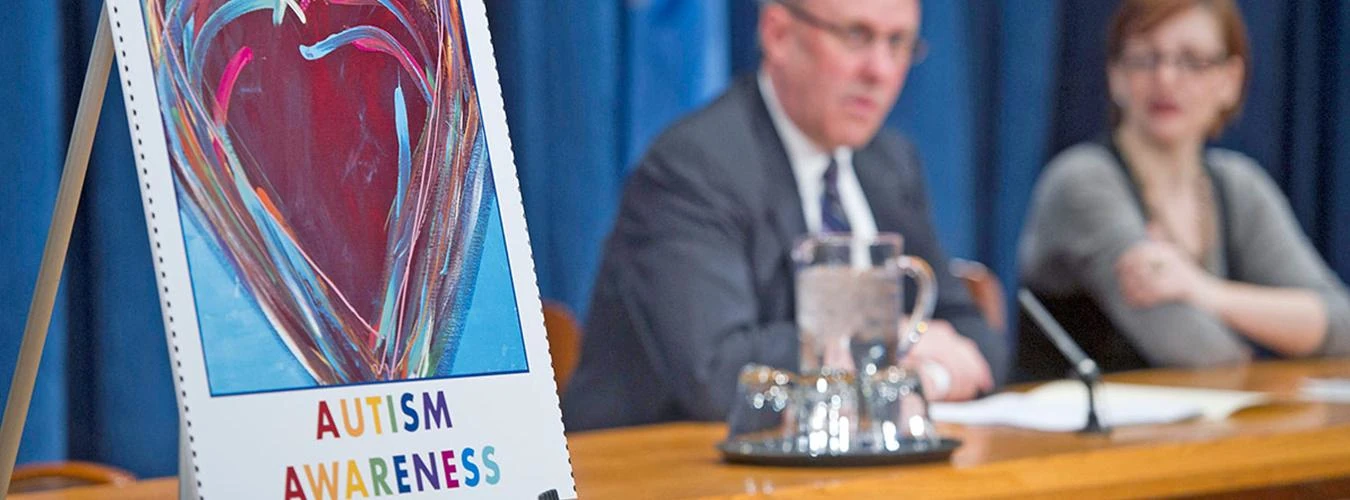Every year on April 2, the world unites to observe World Autism Awareness Day (WAAD)—a day dedicated to raising awareness about Autism Spectrum Disorder (ASD) and fostering a more inclusive society. Established by the United Nations in 2007, this day serves as a global platform to promote understanding, challenge stereotypes, and advocate for the rights of individuals on the spectrum.
With millions of individuals and families affected by autism worldwide, this annual event highlights the importance of early diagnosis, intervention, and the need for supportive environments that allow autistic individuals to thrive. But beyond just awareness, the goal is to ensure that society moves towards acceptance and inclusion.

Understanding Autism Spectrum Disorder (ASD)
Autism Spectrum Disorder (ASD) is a neurodevelopmental condition that affects how a person perceives the world, communicates, and interacts with others. It is called a spectrum because it encompasses a wide range of characteristics, strengths, and challenges unique to each individual.
Common Characteristics of Autism:
- Differences in Social Interaction: Individuals may struggle with verbal and non-verbal communication, making social interactions more challenging.
- Repetitive Behaviors: Repeating movements, routines, or speech patterns (echolalia) is common.
- Sensory Sensitivities: Some individuals may experience heightened or diminished sensitivity to light, sound, touch, taste, or smell.
- Special Interests and Abilities: Many autistic individuals have deep knowledge and exceptional skills in specific areas such as music, mathematics, art, or technology.
- Cognitive and Developmental Variations: While some individuals may need significant support, others are highly independent, excelling in various fields.
The Importance of World Autism Awareness Day
1. Raising Awareness and Reducing Stigma
Despite increasing knowledge about autism, misconceptions and stigma persist. Many autistic individuals face discrimination in education, employment, and social settings. WAAD helps combat misinformation by promoting accurate information and fostering empathy.
2. Encouraging Early Diagnosis and Intervention
Early detection is crucial in providing the right support and resources for autistic individuals. Recognizing early signs of autism allows families to access interventions that enhance communication, social skills, and independence. WAAD helps promote resources that guide parents, caregivers, and educators in early screening and intervention strategies.
3. Supporting Inclusive Education and Employment
Autistic individuals often face challenges in the education system and workforce due to rigid structures and lack of accommodations. By advocating for inclusive policies, WAAD helps drive the movement towards creating autism-friendly schools and workplaces.
4. Highlighting the Strengths of Autistic Individuals
Too often, autism is framed in terms of challenges rather than unique strengths. Many autistic individuals have extraordinary talents in various domains. Recognizing these abilities shifts the narrative from disability to diversity and promotes a strength-based approach to inclusion.
Global Events and Activities on World Autism Awareness Day
World Autism Awareness Day is marked by a variety of events worldwide. Here are some of the ways people participate:
1. Light It Up Blue Campaign
One of the most well-known traditions is the Light It Up Blue campaign, where iconic landmarks, businesses, and homes around the world are illuminated in blue lights to signify solidarity with the autism community. Organized by Autism Speaks, this initiative spreads visual awareness and encourages conversations about ASD.
2. Educational Campaigns and Webinars
Organizations, schools, and workplaces host seminars, workshops, and panel discussions featuring experts, parents, and autistic individuals to share their experiences and insights on autism.
3. Fundraising for Autism Support Programs
Charities and advocacy groups use this day to raise funds for autism research, therapies, and community programs that directly benefit autistic individuals and their families.
4. Community Engagement Activities
Many local organizations arrange sensory-friendly events, inclusive sports, arts and crafts workshops, and autism-friendly movie screenings to celebrate neurodiversity.
5. Social Media Awareness and Hashtags
Advocacy groups and individuals use #WorldAutismAwarenessDay, #LightItUpBlue, #AutismAcceptance, and #Neurodiversity to spread messages of support, educate the public, and share personal stories.
Moving Beyond Awareness: Promoting Acceptance and Inclusion
While awareness is an important step, true change comes through acceptance and action. Here are some ways individuals and communities can support autistic individuals beyond April 2:
1. Advocate for Inclusive Policies
Support policies that ensure autistic individuals have equal access to education, employment opportunities, healthcare, and community participation.
2. Educate Yourself and Others
Take the initiative to learn from autistic voices, organizations, and research to dispel myths and promote accurate understanding.
3. Create Autism-Friendly Environments
Businesses, schools, and public spaces can adopt sensory-friendly practices by offering quiet spaces, flexible accommodations, and staff training on autism inclusion.
4. Support Autistic-Owned Businesses and Creators
Many autistic individuals have entrepreneurial ventures and creative projects. Supporting their work fosters financial independence and highlights their contributions to society.
5. Celebrate Neurodiversity
Rather than focusing solely on challenges, recognize and embrace the diversity of thought, creativity, and innovation that autistic individuals bring to the world.
Conclusion
World Autism Awareness Day is more than just a date on the calendar—it is a call to action for a more inclusive world. While April 2 serves as a reminder to educate, advocate, and celebrate neurodiversity, the work doesn’t stop there. Every day, we can contribute to a society that values, supports, and uplifts autistic individuals and their families.
By shifting from awareness to acceptance, and from understanding to action, we move closer to a world where every autistic person has the opportunity to thrive.


